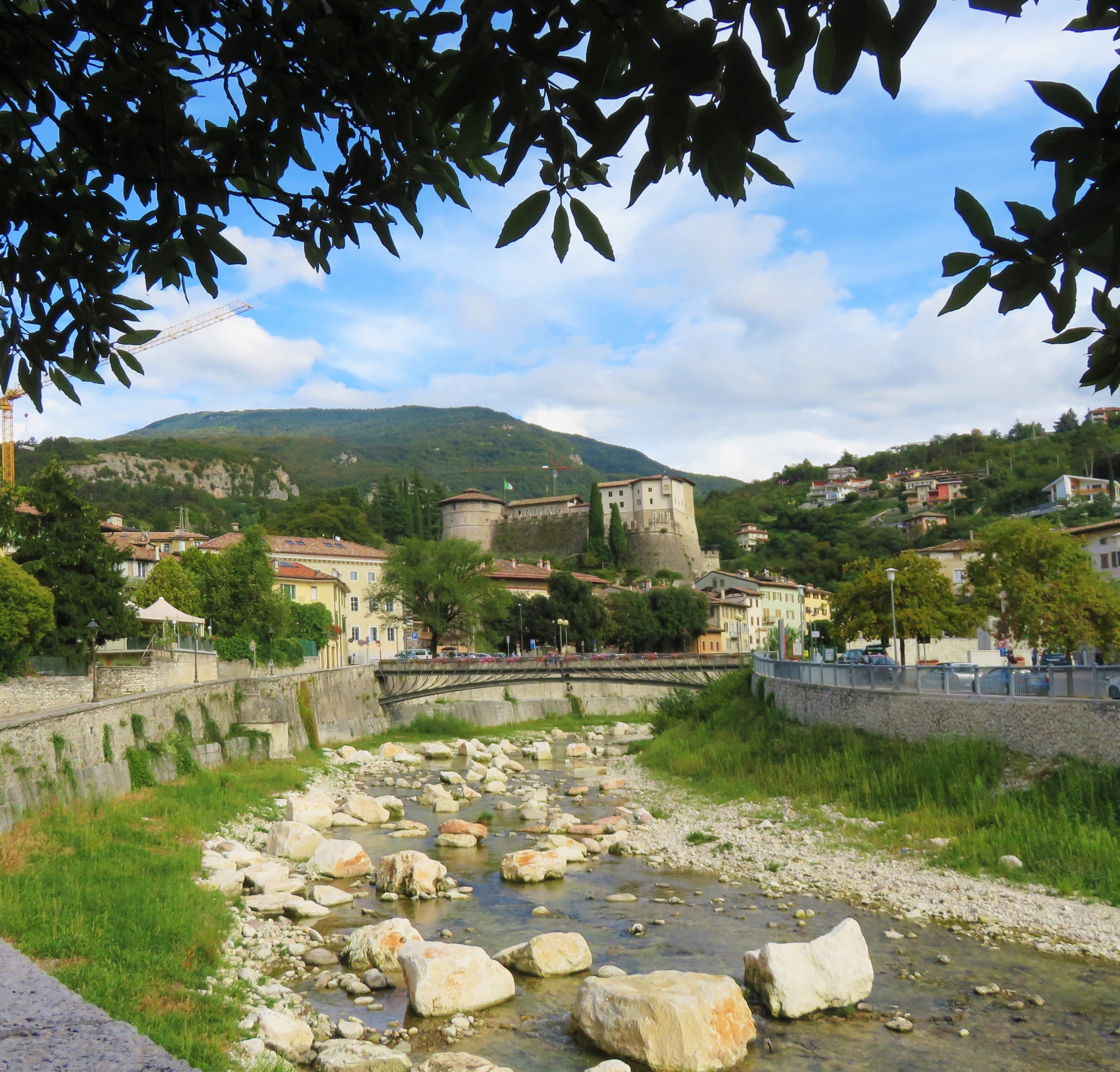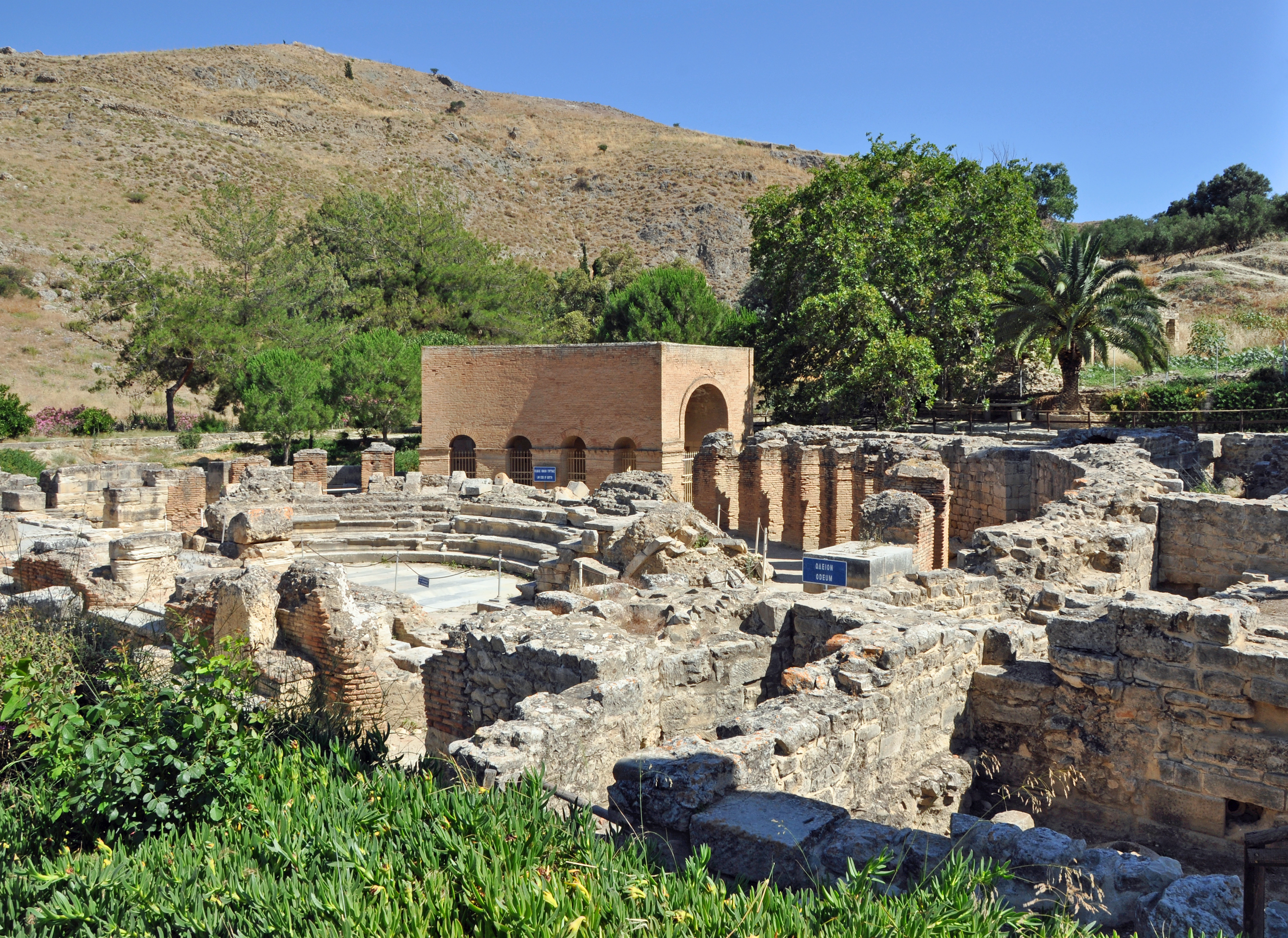|
Federico Halbherr
Federico Halbherr (Rovereto, then in the Austro-Hungarian Empire, 15 February 1857 – Rome, 17 July 1930) was an Italian archaeologist and epigrapher, known for his excavations of Crete. A contemporary, good friend, and trusted advisor of Arthur Evans, he began excavating at Phaistos before Evans began excavating at Knossos. Some of his explorations were funded by the Archaeological Institute of America. For all the time that he explored and excavated in Crete, and was accepted as a valued friend by the British and Americans, Halbherr was, strictly speaking, not Italian, but Austrian. His native city, Rovereto, was on the Austrian side of the border in what is now northern Italy. Halbherr's first education beyond secondary school was in Vienna. At heart, however, he was an Italian. He soon went to Italy to study with Domenico Comparetti. It was under the latter's auspices that he first excavated in Crete, to become known as an Italian archaeologist. He shared his deepest interes ... [...More Info...] [...Related Items...] OR: [Wikipedia] [Google] [Baidu] |
Rovereto
Rovereto (; "wood of sessile oaks"; locally: ''Roveredo'') is a city and ''comune'' in Trentino in northern Italy, located in the Vallagarina valley of the Adige River. History Rovereto was an ancient fortress town standing at the frontier between the bishopric of Trento – an independent state until 1797 – and the republic of Venice, and later between Austrian Tyrol and Italy. In the Middle Ages it was known by its German toponyms ''Rofreit'' and ''Rovereith''. This town started to be populated with inhabitants of the prehistory with traces that were found where today are the oldest ways which belong to the actual main historical centre, around via della Terra. The town has a complexity of plans which are printed in various developments, as if it could have different directions to evolve an ideal, brought towards its completeness in the 15th century, from the model of Siena – the leaf of the crown and the classic Athens reference of the foxil Nautilus. Some of the trace ... [...More Info...] [...Related Items...] OR: [Wikipedia] [Google] [Baidu] |
Vienna
en, Viennese , iso_code = AT-9 , registration_plate = W , postal_code_type = Postal code , postal_code = , timezone = CET , utc_offset = +1 , timezone_DST = CEST , utc_offset_DST = +2 , blank_name = Vehicle registration , blank_info = W , blank1_name = GDP , blank1_info = € 96.5 billion (2020) , blank2_name = GDP per capita , blank2_info = € 50,400 (2020) , blank_name_sec1 = HDI (2019) , blank_info_sec1 = 0.947 · 1st of 9 , blank3_name = Seats in the Federal Council , blank3_info = , blank_name_sec2 = GeoTLD , blank_info_sec2 = .wien , website = , footnotes = , image_blank_emblem = Wien logo.svg , blank_emblem_size = Vienna ( ; german: Wien ; ba ... [...More Info...] [...Related Items...] OR: [Wikipedia] [Google] [Baidu] |
Gortys Law Inscription
Gortyna ( grc, Γόρτυνα; also known as Gortyn (Γορτύν)) was a town of ancient Crete which appears in the Homeric poems under the form of Γορτύν; but afterwards became usually Gortyna (Γόρτυνα). According to Stephanus of Byzantium it was originally called Larissa (Λάρισσα) and Cremnia or Kremnia (Κρήμνια). History This important city was next to Cnossus in importance and splendour; in early times these two great towns had entered into a league which enabled them to reduce the whole of Crete under their power; in after-times when dissensions arose among them they were engaged in continual hostilities. It was originally of very considerable size, since Strabo reckons its circuit at 50 stadia; but when he wrote it was very much diminished. He adds that Ptolemy Philopator had begun to enclose it with fresh walls; but the work was not carried on for more than 8 stadia. In the Peloponnesian War, Gortyna seems to have had relations with Athens. ... [...More Info...] [...Related Items...] OR: [Wikipedia] [Google] [Baidu] |
Dino Grandi
Dino Grandi (4 June 1895 – 21 May 1988), 1st Conte di Mordano, was an Italian Fascist politician, minister of justice, minister of foreign affairs and president of parliament. Early life Born at Mordano, province of Bologna, Grandi was a graduate in law and economics at the University of Bologna in 1919 (after serving in World War I). Grandi started a career as a lawyer in Imola. Attracted to the political left, he nonetheless became impressed with Benito Mussolini after the two met in 1914, and became a staunch advocate of Italy's entry into the World War. He joined the Blackshirts at age 25, and was one of 35 Fascist delegates elected, along with Mussolini, in May 1921 to the Chamber of Deputies. Grandi survived an ambush carried out by leftist militants in 1920, and had his studio devastated on one occasion. Fascist statesman After the March on Rome on 28 October 1922, in which the Fascists took power in Italy, Grandi became part of the new government; first as the un ... [...More Info...] [...Related Items...] OR: [Wikipedia] [Google] [Baidu] |
Treaty Of Saint-Germain-en-Laye (1919)
The Treaty of Saint-Germain-en-Laye (french: Traité de Saint-Germain-en-Laye) was signed on 10 September 1919 by the victorious Allies of World War I on the one hand and by the Republic of German-Austria on the other. Like the Treaty of Trianon with Hungary and the Treaty of Versailles with Germany, it contained the Covenant of the League of Nations and as a result was not ratified by the United States but was followed by the US–Austrian Peace Treaty of 1921. The treaty signing ceremony took place at the Château de Saint-Germain-en-Laye. Background As a preamble, on 21 October 1918, 208 German-speaking delegates of the Austrian Imperial Council had convened in a "provisional national assembly of German-Austria" at the Lower Austrian Landtag. When the collapse of the Austro-Hungarian Army culminated at the Battle of Vittorio Veneto, the Social Democrat Karl Renner was elected German-Austrian State Chancellor on 30 October. In the course of the Aster Revolution on 31 Oc ... [...More Info...] [...Related Items...] OR: [Wikipedia] [Google] [Baidu] |
Battle Of Vittorio Veneto
The Battle of Vittorio Veneto was fought from 24 October to 3 November 1918 (with an armistice taking effect 24 hours later) near Vittorio Veneto on the Italian Front during World War I. After having thoroughly defeated Austro-Hungarian troops during the defensive Battle of the Piave River, the Italian army launched a great counter-offensive: the Italian victory marked the end of the war on the Italian Front, secured the dissolution of the Austro-Hungarian Empire and contributed to the end of the First World War just one week later. The battle led to the capture of over 5,000 artillery pieces and over 350,000 Austro-Hungarian troops, including 120,000 Germans, 83,000 Czechs and Slovaks, 60,000 South Slavs, 40,000 Poles, several tens of thousands of Romanians and Ukrainians, and 7,000 Austro-Hungarian loyalist Italians and Friulians. Name When the battle was fought in November 1918, the nearby city was called simply Vittorio, named in 1866 for Vittorio Emanuele II, monarch fro ... [...More Info...] [...Related Items...] OR: [Wikipedia] [Google] [Baidu] |
Cyrene, Libya
Cyrene ( ) or Kyrene ( ; grc, Κυρήνη, Kyrḗnē, arb, شحات, Shaḥāt), was an ancient Greek and later Roman city near present-day Shahhat, Libya. It was the oldest and most important of the five Greek cities, known as the pentapoleis, in the region. It gave eastern Libya the classical name ''Cyrenaica'' that it has retained to modern times. Located nearby is the ancient Necropolis of Cyrene. The traditional founder of the city was Battus the Lacedemonian, though the exact relationship between the fledgling city and other cities has led historians to question that narrative. Particularly, the idea that Thera was the sole "mother city" is disputed; and the relationship with other cities, such as Sparta and Samnium merchants, is unclear. Cyrene lies in a lush valley in the Jebel Akhdar uplands. The city was named after a spring, Kyre, which the Greeks consecrated to Apollo. It became the seat of the Cyrenaics, a famous school of philosophy in the fourth century BC, fo ... [...More Info...] [...Related Items...] OR: [Wikipedia] [Google] [Baidu] |
Richard Norton (professor)
Richard Norton (February 9, 1872 – August 2, 1918) was the organizer and head of the American Volunteer Motor Ambulance Corps (also known as the Norton-Harjes Ambulance Corps), which served on the front in France in World War I from 1914 until it was taken over by the American Army in 1917. He was the son of Charles Eliot Norton and Susan Ridley Sedgewick. He was also the director of the Archaeological Institute of America. He was awarded the Croix de Guerre, the Legion of Honour, and the Order of St. Lazarus The Order of Saint Lazarus of Jerusalem, also known as the Leper Brothers of Jerusalem or simply as Lazarists, was a Catholic military order founded by crusaders around 1119 at a leper hospital in Jerusalem, Kingdom of Jerusalem, whose care bec .... His award of the Cross of the Legion of Honor was the highest award given to any foreigner by France during World War I. Early life Norton graduated from Browne and Nichols School and went on to graduate from Harvard with the ... [...More Info...] [...Related Items...] OR: [Wikipedia] [Google] [Baidu] |
University Of Michigan
, mottoeng = "Arts, Knowledge, Truth" , former_names = Catholepistemiad, or University of Michigania (1817–1821) , budget = $10.3 billion (2021) , endowment = $17 billion (2021)As of October 25, 2021. , president = Santa Ono , provost = Laurie McCauley , established = , type = Public research university , academic_affiliations = , students = 48,090 (2021) , undergrad = 31,329 (2021) , postgrad = 16,578 (2021) , administrative_staff = 18,986 (2014) , faculty = 6,771 (2014) , city = Ann Arbor , state = Michigan , country = United States , coor = , campus = Midsize City, Total: , including arboretum , colors = Maize & Blue , nickname = Wolverines , sporti ... [...More Info...] [...Related Items...] OR: [Wikipedia] [Google] [Baidu] |
Treaty Of Ouchy
The Italo-Turkish or Turco-Italian War ( tr, Trablusgarp Savaşı, "Tripolitanian War", it, Guerra di Libia, "War of Libya") was fought between the Kingdom of Italy and the Ottoman Empire from 29 September 1911, to 18 October 1912. As a result of this conflict, Italy captured the Ottoman Tripolitania Vilayet, of which the main sub-provinces were Fezzan, Cyrenaica, and Tripoli itself. These territories became the colonies of Italian Tripolitania and Cyrenaica, which would later merge into Italian Libya. During the conflict, Italian forces also occupied the Dodecanese islands in the Aegean Sea. Italy agreed to return the Dodecanese to the Ottoman Empire in the Treaty of Ouchy in 1912. However, the vagueness of the text, combined with subsequent adverse events unfavourable to the Ottoman Empire (the outbreak of the Balkan Wars and World War I), allowed a provisional Italian administration of the islands, and Turkey eventually renounced all claims on these islands in Article 15 o ... [...More Info...] [...Related Items...] OR: [Wikipedia] [Google] [Baidu] |





